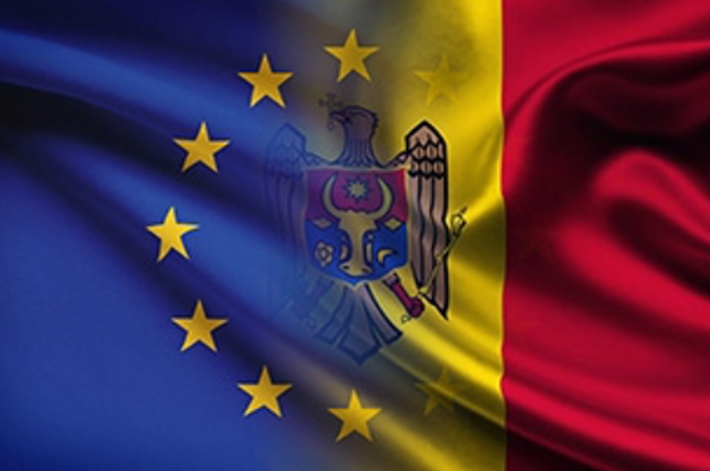
By Laura Sandru
The years following the end of the First World War actively contributed to a dramatic change of the international scene and its architecture, especially as for some eastern European countries, such as today’s Republic of Moldova, which became part of the Soviet Union. After the dissolution of the Soviet Union, Moldova became a member state of the Commonwealth of the Independent States (C.S.I.), gaining its independence in 1991. The democratic course was slowed down by the strong Russian influence on the region. On March 3rd last year the Republic of Moldova successfully applied for admission to the European Union. The Transnistria conflict, the high poverty level, its fragile economic system, strongly dependent on Russia, alongside with the political corruption might represent an obstacle in Moldova’s European integration.
A brief introduction: Moldova before and during the Soviet Union
Situated at the crossroads of authoritarian and democratic ideologies, Moldova has been part of the Russian Empire and its history has followed in the footsteps of Romania’s 20th -century progress. After the First World War, simultaneously with the Bolshevik Revolution, Moldova’s territories were highly affected by international events. At the beginning of the Great War, Romania chose neutrality, which lasted up until 1916, when the country changed its perspective due to some international factors, especially with regard to its eastern neighbor Russia. At the end of the war, Moldova was proclaimed part of Greater Romania at the Paris Peace Conference. Russia did not recognize this territorial junction. After a violent war all the newly-formed states were forced to improve and stabilize their economies. For almost 20 years Moldova was part of Romania.
The first year of the Second World War, Romania remained neutral, but eventually the country chose to fight alongside the Axis Powers and this led to the partition of Romania. As a result of the Soviet occupation, Moldova became part of the Soviet Union under the new denomination of Socialist Soviet Republic of Moldova. The Socialist Soviet Republic of Moldova’s structure was similar to all the other eastern European countries – a communist political ideology together with a centralized economy. Every decision was made by the highest members of the ruling class.
As a result of tensions during the Cold War, the Soviet Union hardened its military control, placing military trained forces along those territories considered strategic for the Union, such as the Nagorno-Karabagh region, the Donbass region, South Ossetia, and the Transnistria region.
The dissolution of the Soviet Union – Moldova’s journey towards independence
The collapse of the Soviet bloc led to a paradigm shift and democracy began to be considered the ideal way of governing a country. The ex-soviet countries aimed for economic, civil and political stability that led to the establishment of the Commonwealth of Independent States. The following years were marked by uncertainty and instability until 1994, when the Republic of Moldova had its first national election with the victory of the communist party. For 15 years the country was ruled in a pro-Russian and communist manner util a massive protest in 2009 put a more democratic and pro-European party in power. The political stage of the last decade was marked by internal confrontation between the national parties and by rampant corruption. Moreover, the Russian influence slowed down Moldova’s path to European Union’s integration.
A new democratic perspective
With the 2020 election won by a pro-European leader, Maia Sandu, Moldova’s situation saw a change. With their new leader, the peoples of Moldova regained confidence and trust and the European admission became part of the political agenda again, even though this has highlighted Moldova’s many challenges.
New challenges: Moldova and the European Union
The European Commission “reaffirmed its interests in consolidating the actual partnership through EU-Moldova Association Council”, in order to support the economic integration and the healthcare system during the pandemic crisis.
Moldova still needs to overcome a series of obstacles to become a state member, one of which is the Transnistria conflict. Nowadays, the region has its own system of governance ruled by a pro-Russian government and defended by military forces. One of the problems that occurred after February 24th 2022 concerned electricity supply to Moldova. The main source of power is located in Transnistria, therefore Moldova’s government asked Romania for help to face the energy crisis.
To better understand Moldova’s supply crisis, providing some data can be useful: the gas price was 265 USD/ 1000 m3 in 2021 and it is 1193 USD/1000 m3 in April 2022. Since we now live in an interdependent world, the pandemic situation and the war in Ukraine indirectly contributed to the rate of poverty in Moldova. Currently available statistics show “that approximately 30% of the population of the eastern European state lives below the poverty line and more than that 50% of the population presents a high risk of poverty”.
The gas crisis and the high poverty rate has significantly increased the instability and vulnerability of the country, leading the population to protest. The recent situation in Moldova – street protests and a threat of a coup d’état – have been probably instrumentalized by external Russian forces. The protests in Moldova have been strengthened by Russian propaganda and disinformation.
Currently the Republic of Moldova benefits from all possible support from the international organizations in order to prevent both a possible extension of the war and the halt in the process of economic, political and social integration in the European Union.
